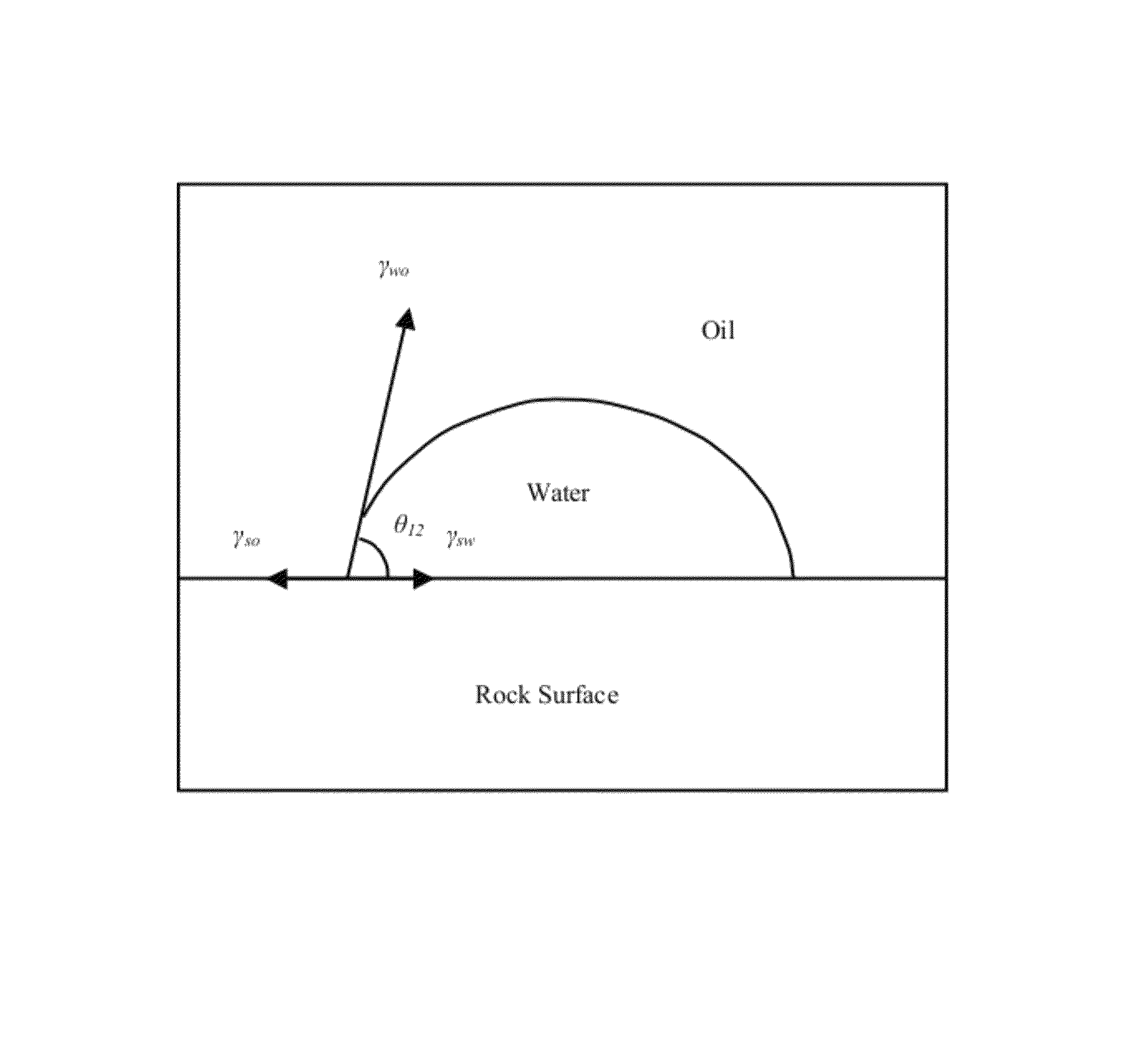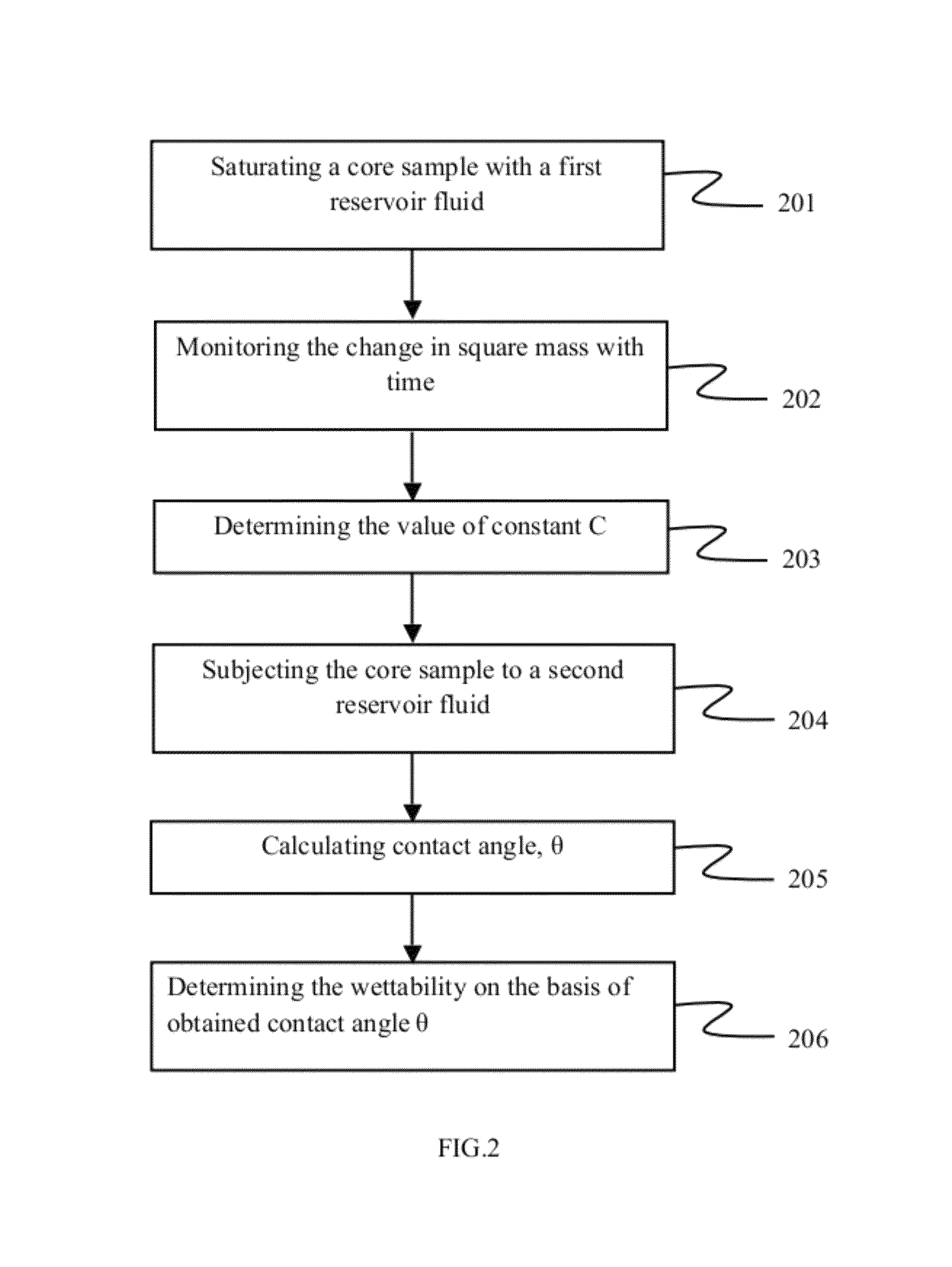Rise in core wettability characterization method
a wettability and core technology, applied in the direction of sealing/packing, instruments, borehole/well accessories, etc., can solve the problems of inability to predict water flooding performance, inability to meet the majority of the surface of water, inaccurate prediction of water flooding performance, etc., to achieve easy use, quick and accurate measurements of wettability, and no complex equipmen
- Summary
- Abstract
- Description
- Claims
- Application Information
AI Technical Summary
Benefits of technology
Problems solved by technology
Method used
Image
Examples
example 1
Demonstration of the RIC Concept
[0109]Berea sandstone core samples, synthetic brine and kerosene were used to prove the RIC concept. For the past 30 years, Berea sandstone core samples have been widely recognized by the petroleum industry as the best outcrop rock for laboratory testing. To demonstrate the RIC concept, this section presents the series of measurements performed on core plugs cut from a core sample of 19.62% porosity and 162 md permeability.
[0110]FIG. 7 shows RIC imbibition curve for n-dodecane / air / rock system for one of the core samples, according to an embodiment herein. With respect to FIG. 7, a mass change vs. time data of dodecane imbibition into the core plug was recorded to obtain a curve. Then using the curve obtained in FIG. 7, the slope, m2 / t of the curve was determined. The slope came out to be 0.0010657 g2 / minor 1.7761×10−5 g2 / sec. Then using the properties of the air and dodecane, the slope value was applied in Equation (8) to determine value of C, in the ...
example 2
Repeatability Analysis
[0116]To prove that the RIC experiment systematically repeatedly produces the same results, the RIC experiments were repeatedly performed on the same rock-fluid system. It should produce consistent and similar results for all the samples.
[0117]A natural Berea core sample of 1.5 inches diameter and 12 cm length was used for this purpose. The core sample was cut into eight smaller core plugs of 1.5 inches diameter and 1.5 cm long each. FIG. 10 shows the core Selection for RIC Repeatability Experiments, according to an embodiment herein. With respect to FIG. 10, three of the core plugs were used for the determination of C and five were used for the wettability determination. To prove the repeatability and considering rock heterogeneity, C values and the wettability values should be very consistent and close to each other. The top, middle and bottom core plugs were chosen for the C determination experiments. Other core plugs were utilized for the RIC wettability ex...
example 3
Analysis of Uncertainty
[0125]In this section, possible uncertainties are considered to determine their effect on the calculated wettability. Two uncertainties are involved including picking up the slope of the imbibition curves for both RIC-C determination and RIC-wettability experiments. Table 3 shows the results of the uncertainty analysis performed on picking up the slope of the Dodecane / Air / Berea rock system including minimum and maximum slopes as well as eight random trials. The table also shows the effect of this uncertainty on the determination of the C values.
[0126]
TABLE 3Uncertainty Analysis of dodecane / Air / Naturally Wet Berea SystemSample 1Sample 2Sample 3Minimum slope (g2 / min)0.00091060.00088840.0007928Maximum slope0.00117760.00110800.0010739Random slope_10.00106570.00106550.0010649Random slope_20.00104590.00104540.0010045Random slope_30.00101600.00103860.0009827Random slope_40.00101900.00091720.0008612Random slope_50.00103400.00107370.0009728Random slope_60.00101520.0010...
PUM
| Property | Measurement | Unit |
|---|---|---|
| length | aaaaa | aaaaa |
| diameter | aaaaa | aaaaa |
| contact angle | aaaaa | aaaaa |
Abstract
Description
Claims
Application Information
 Login to View More
Login to View More - R&D
- Intellectual Property
- Life Sciences
- Materials
- Tech Scout
- Unparalleled Data Quality
- Higher Quality Content
- 60% Fewer Hallucinations
Browse by: Latest US Patents, China's latest patents, Technical Efficacy Thesaurus, Application Domain, Technology Topic, Popular Technical Reports.
© 2025 PatSnap. All rights reserved.Legal|Privacy policy|Modern Slavery Act Transparency Statement|Sitemap|About US| Contact US: help@patsnap.com



